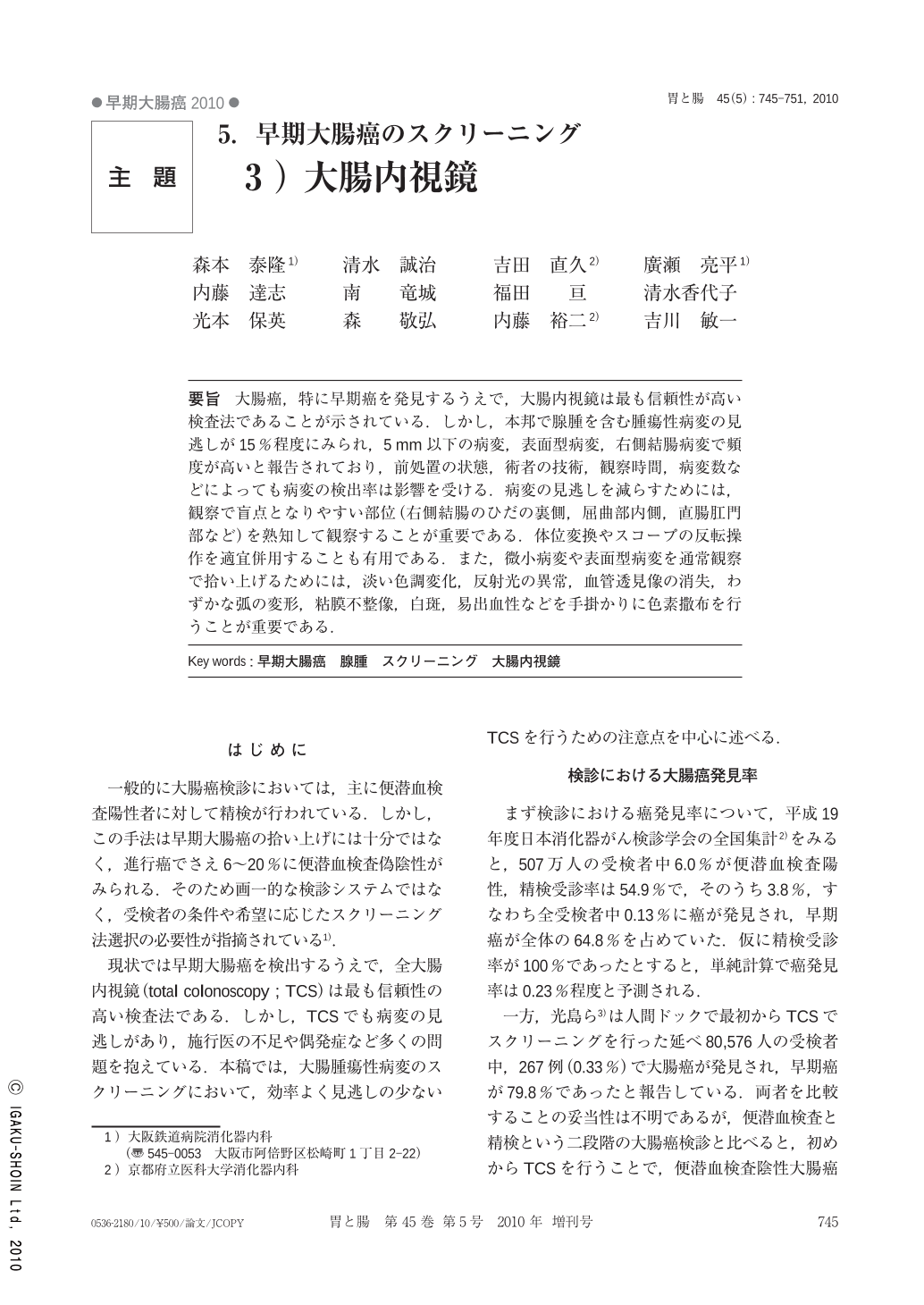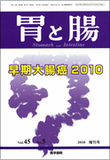Japanese
English
- 有料閲覧
- Abstract 文献概要
- 1ページ目 Look Inside
- 参考文献 Reference
要旨 大腸癌,特に早期癌を発見するうえで,大腸内視鏡は最も信頼性が高い検査法であることが示されている.しかし,本邦で腺腫を含む腫瘍性病変の見逃しが15%程度にみられ,5mm以下の病変,表面型病変,右側結腸病変で頻度が高いと報告されており,前処置の状態,術者の技術,観察時間,病変数などによっても病変の検出率は影響を受ける.病変の見逃しを減らすためには,観察で盲点となりやすい部位(右側結腸のひだの裏側,屈曲部内側,直腸肛門部など)を熟知して観察することが重要である.体位変換やスコープの反転操作を適宜併用することも有用である.また,微小病変や表面型病変を通常観察で拾い上げるためには,淡い色調変化,反射光の異常,血管透見像の消失,わずかな弧の変形,粘膜不整像,白斑,易出血性などを手掛かりに色素撒布を行うことが重要である.
Colonoscopy has proved to be the most reliable method to detect colorectal cancers, especially in the early stage. However, missing rates in the detection of neoplastic lesions including adenomas are reported to be about 15% in Japan. Minute lesions sized below 5mm, superficial type ones, and those in the right side colon are likely to be overlooked. Furthermore, other factors which influence missing rates include the degree of preparation, technical level of the examiners, the time spent on observation, the number of lesions, etc. The examiners should be well aware of the blind spots of observation, i.e. the back of folds, inner corners of flexures, the anorectal area, etc. Changes of the examinee's body position and use of retroflex observation should be properly employed. To detect minute or superficial lesions, indigocarmine dye should be sprayed at minute abnormalities such as color changes of slight degree, abnormal light reflection, obscured vascular transparency, irregularity of the contour of folds, the presence of white spots, friability, etc.

Copyright © 2010, Igaku-Shoin Ltd. All rights reserved.


